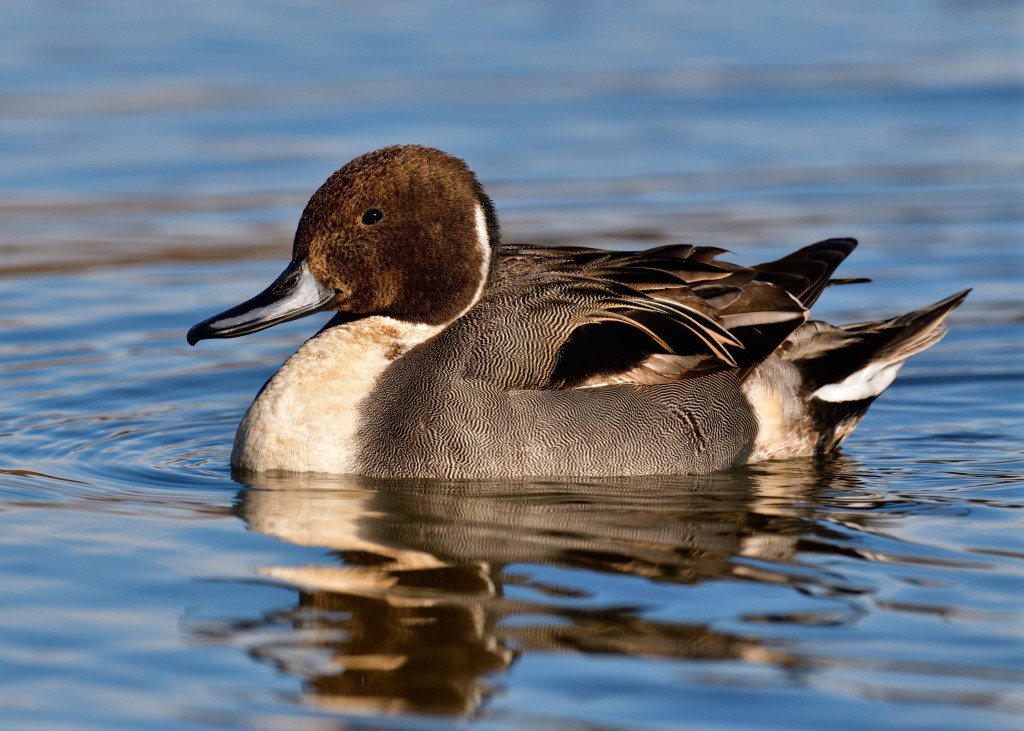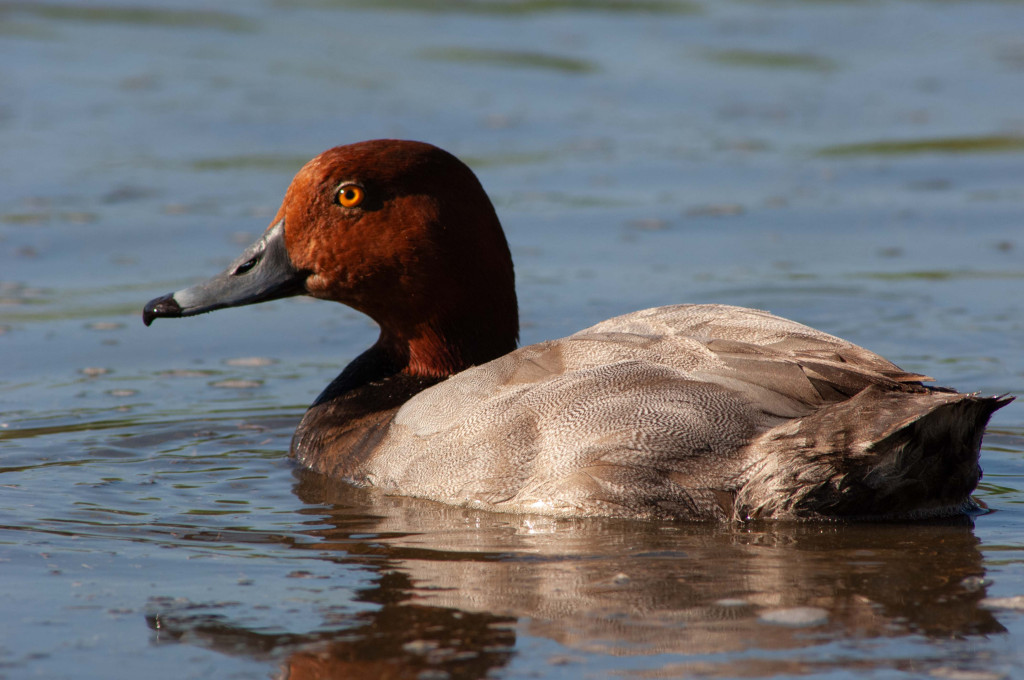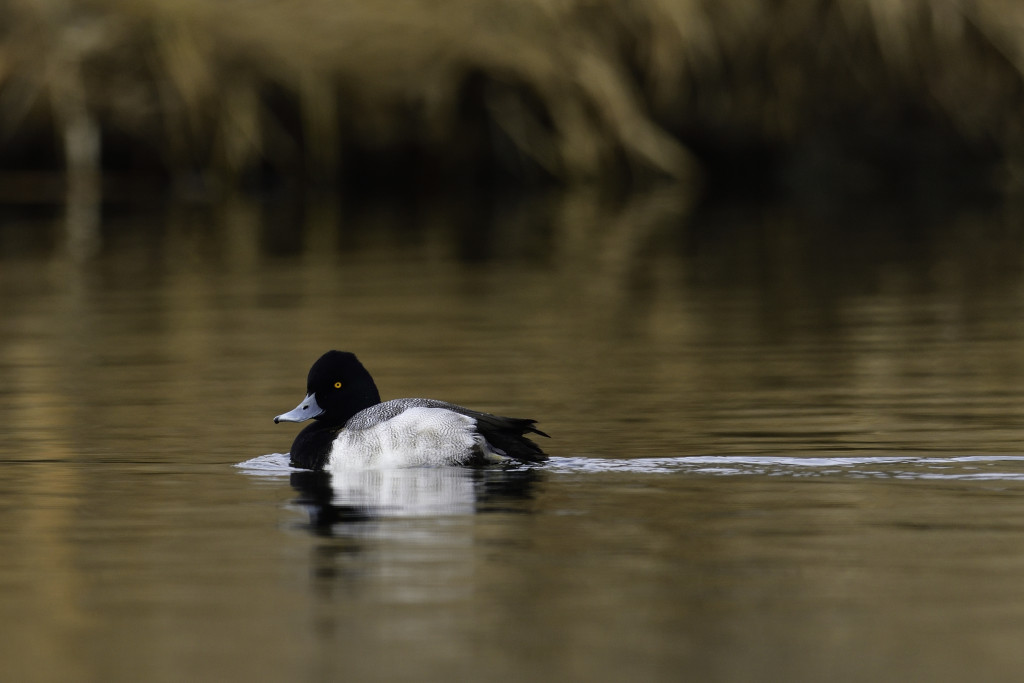October marks the beginning of the waterfowl migration to their wintering grounds.
Enlarge

Photo by Chris Masada
By Olivia DaRugna, Watchable Wildlife Biologist
October marks the start of migration for many waterfowl species as they make their way back to wintering grounds. At the start of migration, it’s a trickle of just a few individuals here and there, but as the month progresses, that trickle turns into a stream of ducks landing on water bodies throughout the state, typically swelling into large aggregations as winter approaches. The next few months will be prime time for viewing waterfowl until the water freezes over.
If you are new to identifying waterfowl, it can feel overwhelming at first. This October could be your year to start learning.
Where to Look
Start by birding at smaller water bodies, such as marshes and ponds, which can provide close looks at waterfowl rather than distant blobs on larger lakes, which can be frustrating to ID for any birder. Visit the Nebraska Birding Guide website for great birding locations.
Remember to stay quiet and approach the water slowly to prevent the ducks from flying away. As you wait quietly, you may see more birds appearing from the reeds or landing on the water. Focus on positioning yourself to get quality sightings, which will allow you to see unique markings, colors, shapes and behavior.
If you do decide to bird at a larger body of water, scan the water for large concentrations of ducks, sometimes referred to as a raft. Depending on distance, identifying them can be tricky. This leads into the next tip.

Binoculars are a must! If you have access, spotting scopes can be helpful for viewing distant rafts. Starting slowly, scan the waterbody back and forth to look for floating ducks.
Using your car as a viewing blind can allow you to get closer looks at waterfowl. Think about lakes and parking areas that may allow for this kind of birding, such as some areas of Branched Oak State Recreation Area and Lake McConaughy SRA.
Waterfowl Field Marks
Before you head out, make the best use of your time afield by reviewing the species that may occur in your area this time of year and brush up on their field marks. It can be easier to familiarize yourself with the drake (male) appearance first because they typically have more distinct plumage than females.
I still use corny tricks for remembering field marks for some drakes. For instance, if you see a duck with an Oreo pattern, dark on both ends and white in the middle, that is likely a scaup.
Canvasback and redhead drakes sport impressive, deep red colors on their heads. Besides the whiter body of the canvasback, compared to the greyish body of the similar redhead, the canvasback head gently slopes into its bill, giving it a ski slope appearance. On the other hand, redheads have a forehead that curves abruptly down before meeting the base of its bill. Maybe it’s because I am not coordinated on skis, but I always think I’d rather take the kiddy slope of the canvasback’s forehead over the steep, black diamond-like slope of the redhead’s face.

Diving vs. Dabbling
Once you get a good look at a duck, watch its behavior. Is it diving completely under the water, indicating that it’s a diving duck, or is it tipping forward with head underwater rump up in the air, indicating that it’s a dabbling duck? A few common diving ducks you may encounter in Nebraska include bufflehead, canvasback, common goldeneye, mergansers, redhead, ring-necked duck, ruddy duck and scaup. Common dabbling ducks to watch for include American wigeon, gadwall, mallard, northern shoveler, northern pintail and teal.
Birding Conditions
Birding on cloudy days can help reduce the harsh glare of the water. Luckily for us, cloudy days are not too hard to come by in late fall. Even when lighting conditions are harsh, the white areas on a duck should still stand out, so make note of where you see white to help confirm identification along with bill shape, behavior and any key marks you can make out on a poorly-lit day
These are just a few tips to get you started on identifying waterfowl, but the most important thing is to get out there and practice. Each outing will offer new learning opportunities and new species to see as we approach winter. Visit new locations to see different species and habitats. Nebraska has some great marshes, ponds and lakes for viewing waterfowl and wildlife.

Upcoming Wildlife-viewing Events
Bird banding stations at Chadron State Park and Wildcat Hills Nature Center are open until mid-October. You can stop by the Bird Conservancy of the Rockies stations to learn about and view the birds banded Wednesday through Sunday.
Reptile Awareness Month – To help build appreciation for reptiles, there will be a variety of reptile-themed programs and events throughout the month, including a K-12 art contest. Visit the outdoor calendar for reptile-themed events.
The Big Sit, Oct. 7 and 8 – Kick back, relax and bird during these two days. See how many birds you can identify from one 17-foot diameter circle in your yard, park or other favorite birding location. Sign up, and submit your bird sightings to take part in this nationwide event.
Birdability Week, Oct. 16-22 — Birdability works to ensure that birding is safe, inclusive and accessible for everyone, particularly people with disabilities and other health concerns. Through highlighting accessible birding locations, raising awareness and sharing stories, Birdability seeks to make the great joy of birding something everyone can enjoy.
Bat Week, Oct. 24-31 — Bat Week is a celebration to raise awareness for bat conservation and their incredible role in nature.
 Nebraskaland Magazine
Nebraskaland Magazine


